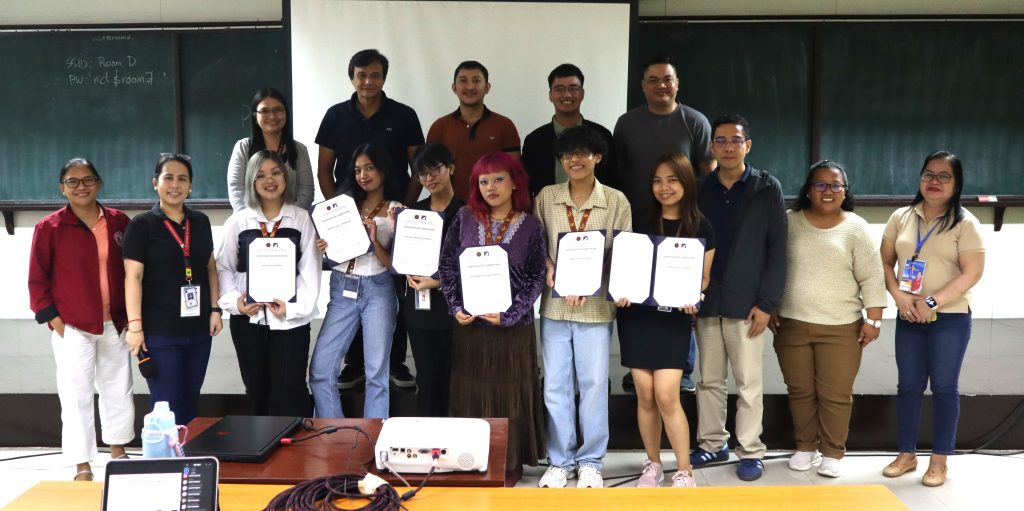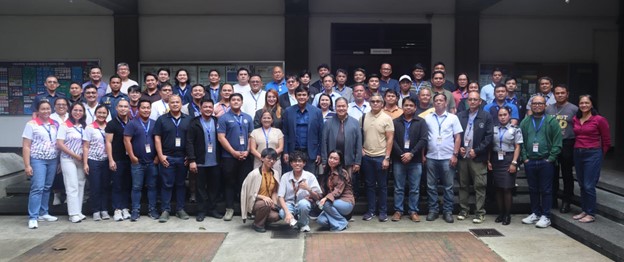On November 22, 2024, the Traffic Engineering and Management-Road Safety Research Laboratory (TEM-RSRL), under the UP National Center for Transportation Studies (UP NCTS), hosted a groundbreaking webinar titled “Safe Roads, Bright Futures: How Child Road Traffic Injury Prevention (CRTIP), iRAP, and Tactical Urbanism are Protecting Children.” Conducted via Zoom, this event marked a milestone as the first webinar organized by NCTS with Professional Regulation Commission (PRC)-approved Continuing Professional Development (CPD) points, reflecting its significance in advancing professional development in road safety.
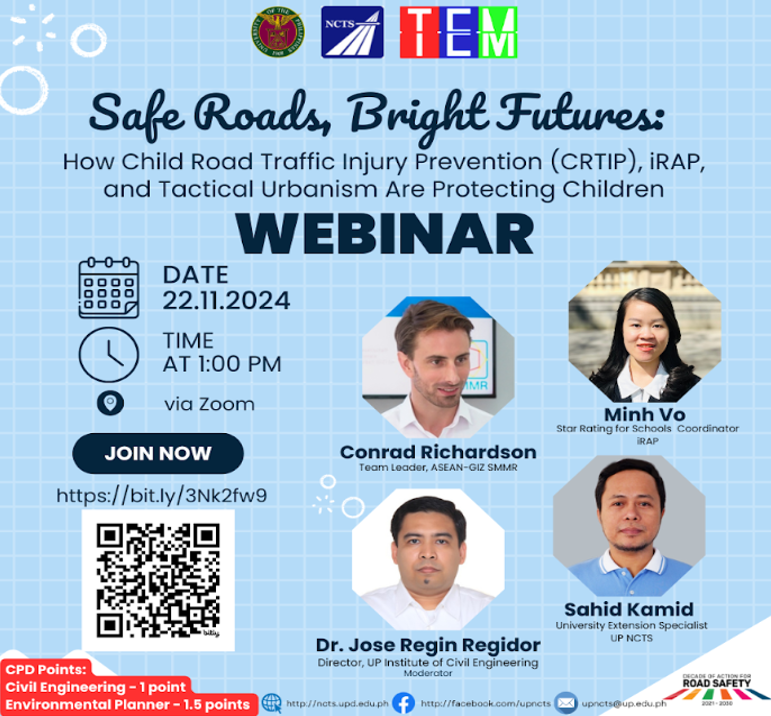
The webinar highlighted the integration of diverse road safety strategies, including iRAP’s Star Rating for Schools (SR4S), outcomes of the Child Road Traffic Injury Prevention (CRTIP) project, and community-driven approaches through tactical urbanism. These efforts aim to reduce child road traffic injuries in the Philippines, aligning with the UN Decade of Action for Road Safety (2021–2030) and the Philippines’ commitment to the 2030 Agenda for Sustainable Development, particularly Sustainable Development Goals (SDGs) 3 and 11.
The program opened with remarks from Dr. Jun T. Castro, Director of UP NCTS, who emphasized the critical role of partnerships among government agencies, non-government organizations, and international stakeholders in promoting safer roads for children. Following this, Mr. Glenn Simon D. Latonero, a University Extension Associate at UP NCTS, introduced the objectives of the webinar and set the tone for the day’s discussions on improving child road safety through evidence-based strategies and collaborative initiatives.
The plenary session featured three key presentations:
- The Role of SR4S in Supporting CRTIP
- Speaker: Ms. Minh Vo, Coordinator, SR4S, iRAP
- Ms. Vo discussed the use of SR4S in identifying high-risk school zones and implementing data-driven interventions. She shared case studies demonstrating how the tool has enhanced safety in schools across the Philippines, setting a global standard for improving road safety for children.
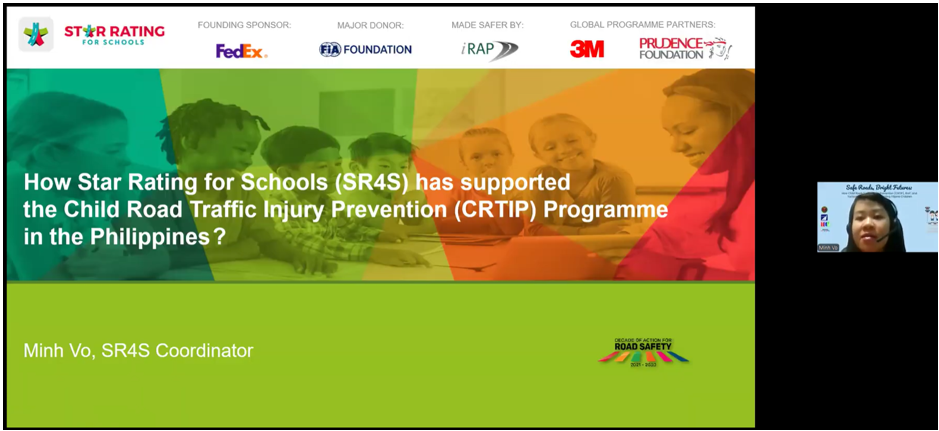
- Outcomes and Impacts of CRTIP
- Speaker: Mr. Sahid Kamid, University Extension Specialist, UP NCTS
- Mr. Kamid presented key results from the CRTIP program, including significant reductions in road crashes and injuries in school zones. He emphasized the importance of engaging local governments and applying evidence-based policymaking to scale such initiatives effectively.
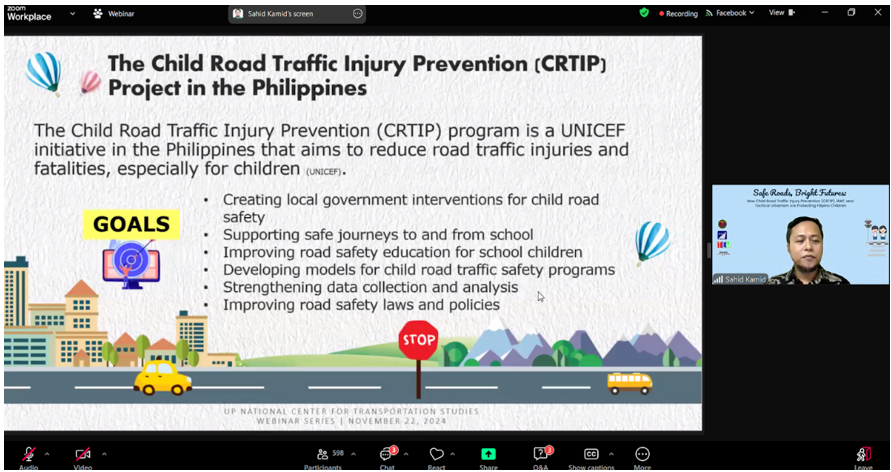
- Tactical Urbanism in Road Safety
- Speaker: Mr. Conrad Richardson, Smart and Sustainable Mobility Specialist
- Mr. Richardson highlighted the application of tactical urbanism in Baguio City, showcasing successful community-driven interventions like pop-up pedestrian crossings and temporary bike lanes. He demonstrated how these initiatives could inspire long-term improvements in urban infrastructure.
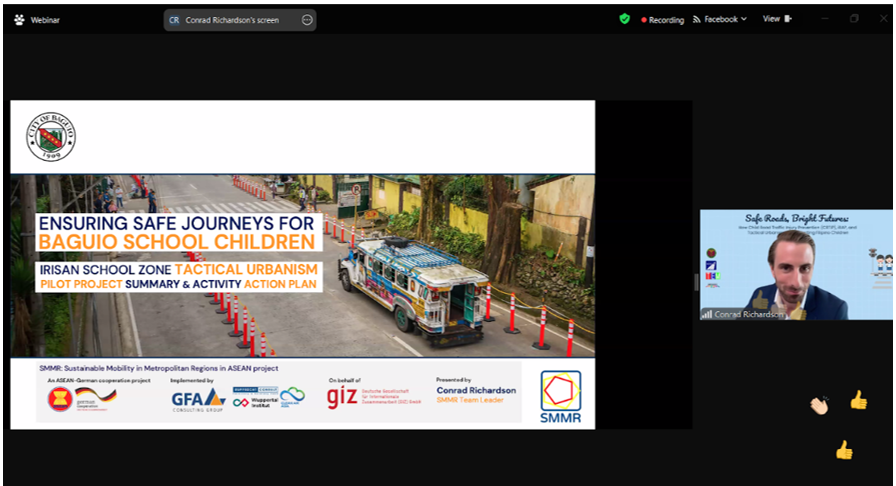
The interactive Q&A session, moderated by Dr. Jose Regin Regidor, provided a platform for participants to engage with speakers on practical applications of the methodologies discussed. Topics included the accessibility of SR4S training, strategies for CRTIP implementation in local government units, challenges of pedestrianization in car-centric urban areas, and guidance on community-led initiatives for safer neighborhoods.
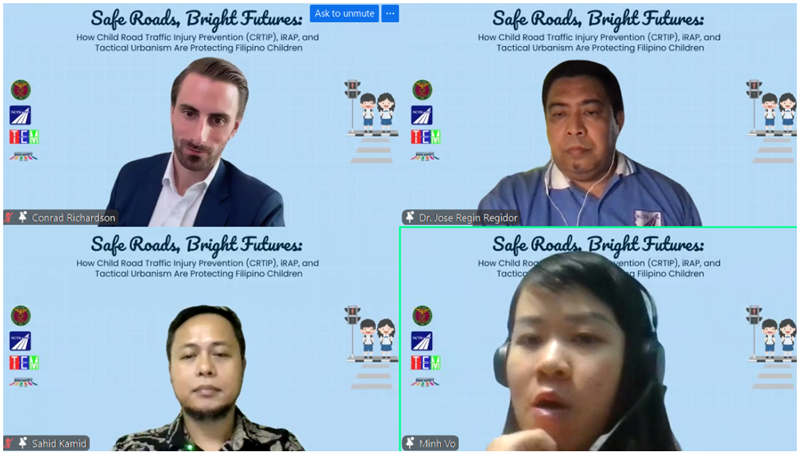
Dr. Sandy Mae Gaspay, Head of TEM-RSRL and Associate Professor at UP Institute of Civil Engineering, synthesized the discussions and highlighted three major takeaways. First, the importance of a data-driven approach to guide decision-making and allocate resources effectively. Second, the value of collaboration and inclusion, emphasizing the engagement of diverse stakeholders such as parents, educators, local officials, and communities. Lastly, she underscored the potential of high-impact, low-cost strategies like tactical urbanism to improve safety incrementally, particularly in school zones and pedestrian areas.
The webinar concluded with the presentation of certificates, a photo opportunity, and final remarks from Engr. Sheila Flor D. Javier, University Extension Specialist at UP NCTS and Head of the Center’s Training Unit. A total of 661 participants attended the webinar, representing various sectors, including government agencies, local government units, private entities, and academia.
This webinar not only showcased actionable strategies for improving child road safety but also reinforced the importance of collaboration, innovation, and sustainability in addressing the pressing challenges of road safety in the Philippines. Participants were encouraged to leverage the tools, insights, and partnerships discussed to move toward safer, more child-friendly road environments in their communities.

The video recording of this webinar can be accessed through this link: https://www.facebook.com/upncts/videos/1234634261144853


